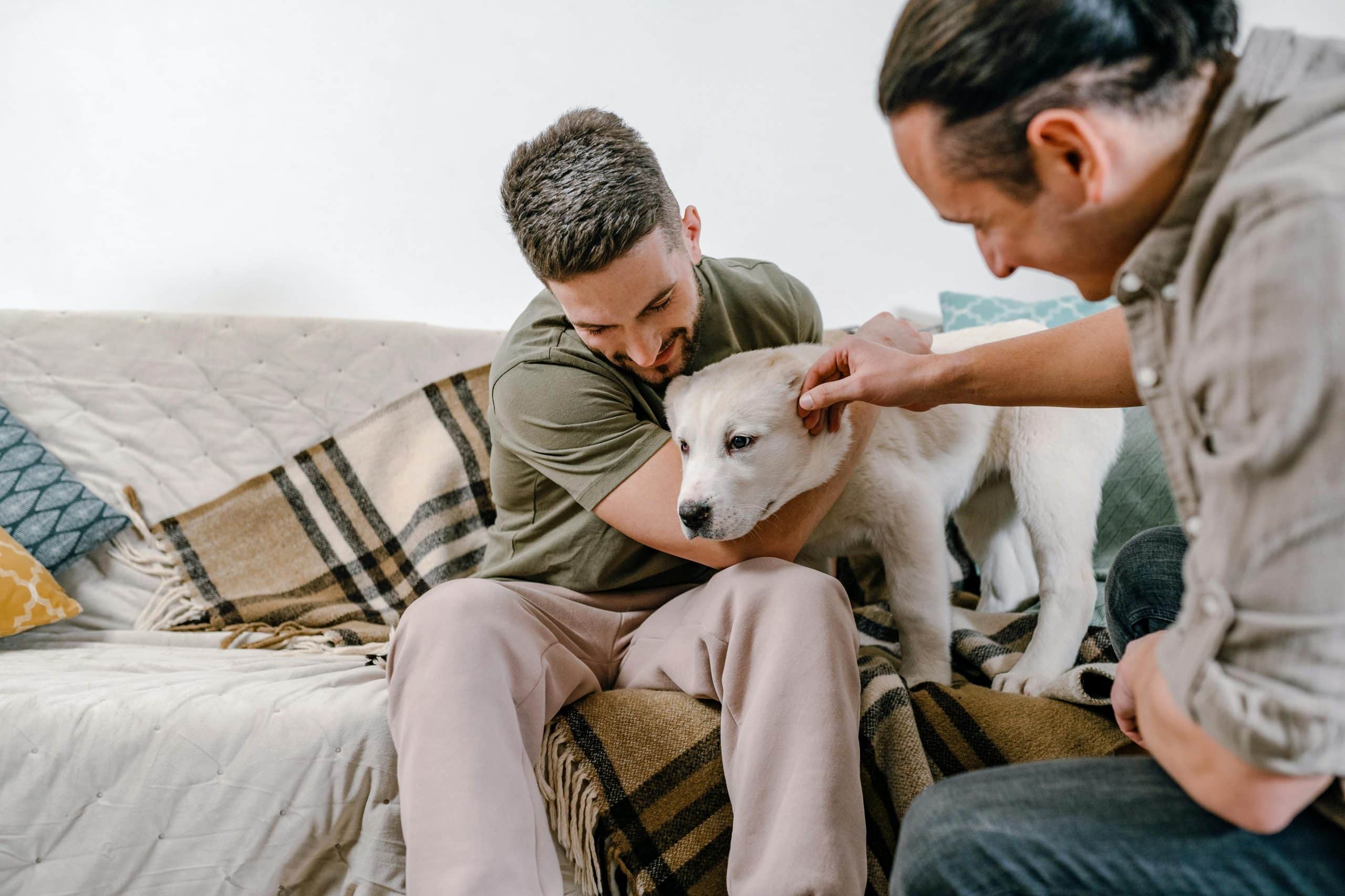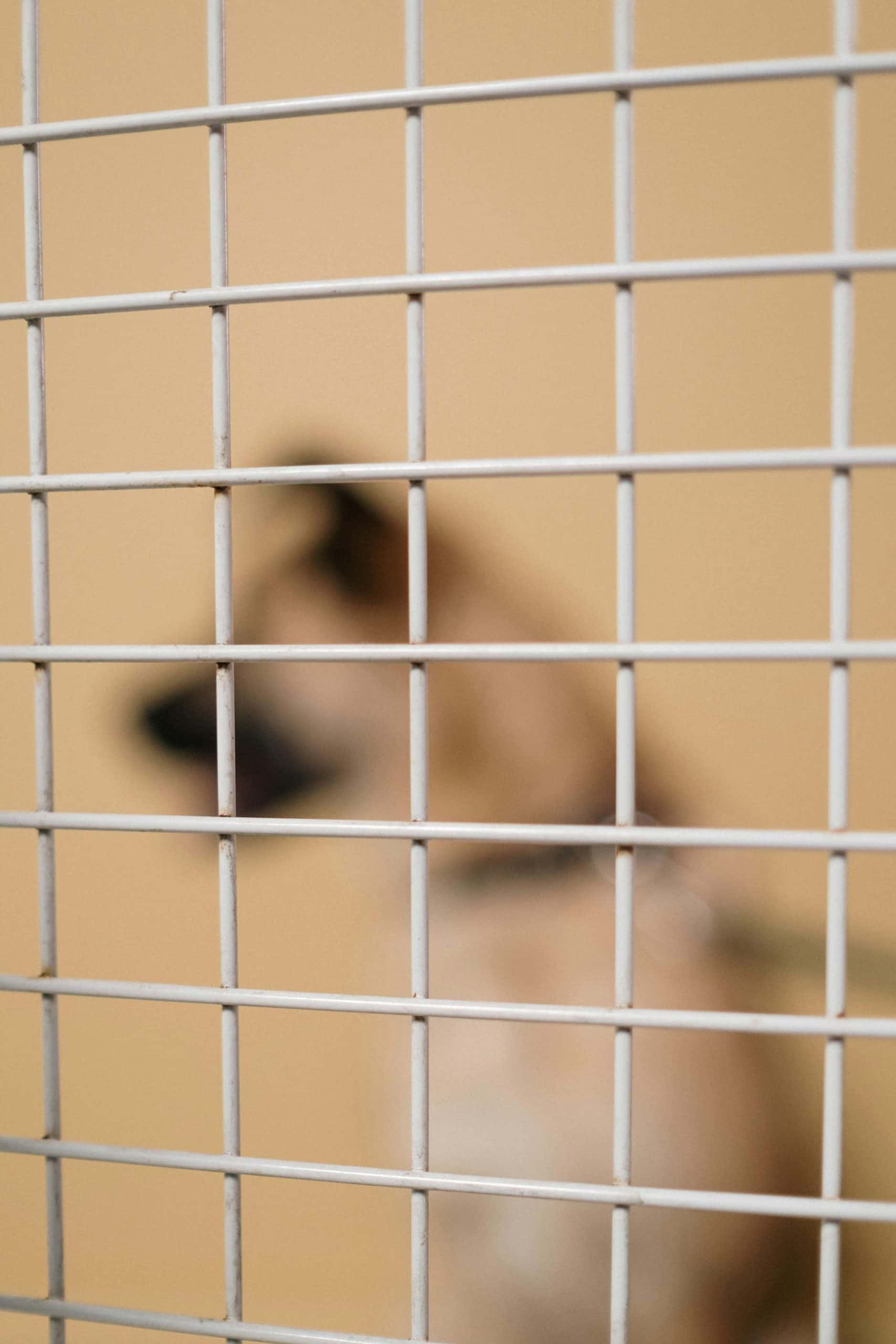If you've ever found yourself sniffling and sneezing whenever you're near dogs, you're not alone. Dog allergies are a common problem for many people who love these furry companions. But fear not, for there are ways to identify and manage these allergies so you can still enjoy the company of man's best friend. In this article, we will explore the different types of common dog allergies and provide helpful tips on how to handle them. So, put your tissues aside and get ready to learn how to keep your allergies at bay while still giving your beloved pup all the love and care they deserve.
Section 1: Understanding Common Dog Allergies
Types of dog allergies
Just like humans, dogs can also suffer from allergies. There are several types of allergies that can affect dogs, including skin allergies (also known as dermatitis), food allergies, and environmental allergies. Skin allergies are the most common type and can be caused by fleas, mites, or certain ingredients in grooming products. Food allergies, on the other hand, occur when a dog's immune system overreacts to certain types of food. Environmental allergies, such as pollen or dust mites, can cause allergic reactions when dogs inhale or come into contact with these substances.
Causes of dog allergies
Dog allergies can be caused by a variety of factors. In the case of skin allergies, the most common triggers are fleas, mites, or certain grooming products. Food allergies can be caused by specific ingredients in a dog's diet, such as grains, meats, or dairy products. Environmental allergies are typically caused by substances in the environment, such as pollen, dust mites, or mold spores. It's important to note that dogs can develop allergies at any age, even if they have been exposed to the allergen before without any issues.
Common symptoms
If your dog has allergies, they may exhibit a range of symptoms. These can include excessive itching or scratching, redness or inflammation of the skin, hair loss, hot spots, ear infections, sneezing, coughing, watery eyes, or gastrointestinal issues such as vomiting or diarrhea. Keep a close eye on your dog's behavior and health to identify any potential allergy symptoms. If you notice any of these signs, it's important to consult a veterinarian for proper diagnosis and treatment.
Section 2: Identifying Dog Allergies
Observing behavioral changes
One way to identify if your dog has allergies is to observe any behavioral changes. If your dog is constantly scratching or biting their skin, rubbing against furniture or other objects, or excessively grooming themselves, it could be a sign of allergies. Allergies may also cause dogs to exhibit restlessness, irritability, or changes in appetite. By paying attention to these changes, you can get a better understanding of whether your dog is suffering from allergies.
Recognizing physical symptoms
Aside from behavioral changes, there are also physical symptoms that can indicate dog allergies. Look for signs of red, inflamed, or irritated skin, hair loss or thinning, recurring ear infections, or discharge from the eyes. Dogs with allergies may also develop hot spots, which are areas of the skin that are intensely itchy and can become infected if left untreated. It's important to thoroughly examine your dog's skin and coat for any of these symptoms.
Visiting a veterinarian
If you suspect that your dog has allergies, it's important to schedule a visit to a veterinarian for a proper diagnosis. A veterinarian will be able to conduct a thorough examination of your dog and ask questions about their symptoms and medical history. They may also perform allergy tests to determine the specific allergens that are causing a reaction in your dog. By consulting a veterinarian, you can receive a proper diagnosis and develop a treatment plan tailored to your dog's specific needs.

This image is property of images.pexels.com.
Section 3: Testing for Dog Allergies
Skin allergy testing
Skin allergy testing, also known as intradermal testing, is a common method used to identify specific allergens that may be causing allergies in dogs. During this test, small amounts of various allergens are injected into the dog's skin, and any reactions are observed. This test can help determine the specific allergens that are causing a dog's allergic reactions, allowing for targeted treatment options.
Blood tests
Blood tests can also be used to identify dog allergies. These tests measure the levels of specific antibodies in the dog's bloodstream, which can indicate an allergic reaction to certain substances. While blood tests may not provide as accurate results as skin allergy testing, they can still offer valuable information about the dog's immune response to potential allergens.
Elimination diet
In some cases, a veterinarian may recommend an elimination diet to identify food allergies in dogs. This involves feeding the dog a diet consisting of a novel protein and carbohydrate source that they have not been exposed to before. If the dog's allergic symptoms improve while on the elimination diet and worsen when certain foods are reintroduced, it can help determine the specific food allergens causing the allergic reaction.
Section 4: Common Allergens for Dogs
Dust mites
Dust mites are a common allergen for both humans and dogs. These microscopic creatures can cause allergies when dogs inhale or come into contact with them. Dust mite allergies can cause a range of symptoms, including itching, sneezing, coughing, and even respiratory issues in some cases. Regularly cleaning and vacuuming your home can help reduce dust mites and minimize your dog's exposure to them.
Pollen
Pollen allergies are another common cause of allergies in dogs. Dogs can develop allergic reactions to various types of pollen, including grass, trees, and flowers. Dogs with pollen allergies may experience symptoms such as itching, sneezing, watery eyes, and inflamed skin. Avoiding areas with high pollen counts or keeping your dog indoors during peak pollen seasons can help minimize their exposure to pollen.
Flea saliva
Flea saliva is a major trigger for allergies in dogs. Even a small number of flea bites can cause an allergic reaction in sensitive dogs. Dogs with flea allergies may experience intense itching, hair loss, and inflamed skin at the site of flea bites. Frequent grooming and using flea prevention products can help reduce the likelihood of flea bites and minimize your dog's allergic reactions.
Environmental irritants
Dogs can also be allergic to various environmental irritants, such as mold spores, dust, and chemicals in household cleaning products. These irritants can cause itching, sneezing, coughing, and other allergic symptoms in dogs. Minimizing your dog's exposure to these irritants by keeping your home clean and using pet-friendly cleaning products can help alleviate their allergic reactions.
Certain food ingredients
Food allergies are another common type of allergy in dogs. Dogs can develop allergies to specific ingredients in their diet, such as beef, chicken, wheat, soy, or dairy products. Food allergies in dogs can cause a range of symptoms, including itching, skin rashes, gastrointestinal issues, and ear infections. Identifying and eliminating the specific food allergens from your dog's diet can help manage their allergic reactions.

This image is property of images.pexels.com.
Section 5: Managing Dog Allergies
Reduce exposure to allergens
One of the key steps in managing dog allergies is minimizing your dog's exposure to allergens. For environmental allergies, you can keep your home clean and free of dust, pollen, and other irritants by regularly vacuuming, washing bedding, and using air purifiers. If your dog is allergic to specific foods, avoiding those ingredients in their diet is crucial. By reducing your dog's exposure to allergens, you can help alleviate their symptoms and improve their overall well-being.
Regular grooming
Regular grooming is essential for dogs with allergies. Bathing your dog with a gentle, hypoallergenic shampoo can help soothe their skin and remove allergens that may be clinging to their fur. Additionally, regular brushing can help remove loose hair and minimize the spread of allergens around your home. Be sure to use grooming products that are specifically formulated for dogs with allergies to avoid further irritation.
Using hypoallergenic products
When it comes to managing dog allergies, using hypoallergenic products can make a significant difference. Opt for dog food that is free of common allergens and contains high-quality ingredients. Look for grooming products that are free of harsh chemicals, fragrances, and dyes. Using hypoallergenic products can help minimize the risk of triggering allergic reactions in your dog.
Provide a balanced diet
A balanced and nutritious diet is crucial for dogs with allergies. Work with a veterinarian to determine the best diet for your dog, considering any known food allergies or sensitivities. Providing a diet that is rich in high-quality protein, healthy fats, and essential nutrients can strengthen your dog's immune system and reduce the risk of allergic reactions.
Supplement with omega-3 fatty acids
Omega-3 fatty acids have been shown to have anti-inflammatory properties and may help alleviate the symptoms of allergies in dogs. Adding omega-3 fatty acid supplements, such as fish oil, to your dog's diet can help reduce itching, inflammation, and other allergic symptoms. Consult with a veterinarian to determine the appropriate dosage for your dog.
Prescription medications
In some cases, a veterinarian may prescribe medications to manage your dog's allergies. Antihistamines can help relieve itching and other allergy symptoms, while corticosteroids may be prescribed for more severe cases. It's important to follow your veterinarian's instructions and use these medications as directed.
Immunotherapy
For dogs with severe or persistent allergies, immunotherapy may be recommended. This involves exposing the dog to gradually increasing amounts of the allergen to desensitize their immune system. Immunotherapy can be administered through allergy shots or sublingual drops. This treatment option aims to reduce the dog's allergic response over time and can provide long-term relief.
Section 6: Home Remedies for Dog Allergies
Bathing with soothing shampoos
Regular baths with soothing shampoos can help provide relief to dogs with allergies. Look for shampoos that contain ingredients like oatmeal or aloe vera, which can help soothe itchy and inflamed skin. Be sure to rinse your dog thoroughly after bathing to remove any remaining shampoo residue.
Applying natural topical remedies
Certain natural remedies can help alleviate allergic reactions in dogs. Products containing ingredients like chamomile, calendula, or witch hazel can be applied topically to reduce itching and inflammation. However, it's important to consult with a veterinarian before using any natural remedies to ensure they are safe and appropriate for your dog.
Using coconut oil
Coconut oil has soothing and moisturizing properties that can benefit dogs with allergies. Applying coconut oil to your dog's skin can help alleviate itchiness and dryness. It can also be given orally as a dietary supplement to support skin health and boost the immune system. Start with a small amount and gradually increase the dosage as recommended by your veterinarian.
Rinsing with apple cider vinegar
Apple cider vinegar can be used as a natural remedy for dogs with allergies. Dilute apple cider vinegar with water and use it as a rinse after bathing your dog. The acidity of apple cider vinegar can help restore the pH balance of your dog's skin and provide relief from itching and inflammation. However, it's important to use apple cider vinegar sparingly and avoid applying it to open wounds or irritated skin.

This image is property of images.pexels.com.
Section 7: Emergency Care for Allergic Reactions
Recognizing severe allergic reactions
It's important to be able to recognize severe allergic reactions in your dog, as these can be life-threatening. Signs of a severe allergic reaction, also known as anaphylaxis, include difficulty breathing, swelling of the face or throat, vomiting, diarrhea, collapse, or seizures. If you suspect that your dog is experiencing a severe allergic reaction, it's crucial to seek immediate veterinary care.
Administering antihistamines
If your dog is experiencing a mild to moderate allergic reaction, you may be able to provide temporary relief by administering an antihistamine. However, it's important to consult with a veterinarian before giving your dog any medication. Some antihistamines can be toxic to dogs, and the appropriate dosage will depend on your dog's size and specific needs.
Knowing when to seek immediate veterinary care
In cases of severe allergic reactions or when your dog's symptoms worsen despite home care, it's important to seek immediate veterinary care. A veterinarian will be able to assess your dog's condition, provide necessary treatment, and ensure that they receive appropriate medical attention. Do not hesitate to call your veterinarian or an emergency veterinarian if you are concerned about your dog's well-being.
Section 8: Allergy Prevention Tips
Maintaining a clean living environment
Keeping your home clean is crucial for preventing allergies in dogs. Vacuum regularly to remove dust, pollen, and other allergens from your carpets and floors. Dust and wipe down surfaces to minimize the presence of irritants. By creating a clean living environment, you can help reduce the risk of allergic reactions in your dog.
Regularly washing bedding and toys
Washing your dog's bedding and toys can help eliminate allergens that may be present on these items. Use hypoallergenic laundry detergent and wash them on a regular basis to keep them clean and free of potential allergens. This will help create a clean and safe space for your dog.
Avoiding exposure to known allergens
If you know that your dog is allergic to specific substances, such as certain types of pollen or certain foods, take proactive measures to avoid exposing them to these allergens. Keep your dog indoors during peak pollen seasons or in areas with high levels of allergens. Read product labels carefully and avoid using any grooming products or foods that contain ingredients your dog is allergic to.
Keeping a balanced and healthy diet
A balanced and healthy diet is not only important for managing allergies but also for preventing them in the first place. Ensure that your dog's diet is rich in essential nutrients and high-quality ingredients. Avoid feeding them foods that are known to commonly trigger allergic reactions in dogs.
Exercise and strengthen your dog's immune system
Regular exercise can help strengthen your dog's immune system and overall well-being. Engage in physical activities with your dog, such as walks or play sessions, to keep them active and healthy. A strong immune system can help reduce the likelihood and severity of allergic reactions in dogs.
Section 9: Consulting a Veterinarian
When to consult a veterinarian
It's important to consult a veterinarian if you suspect that your dog has allergies or if their symptoms worsen despite home care. A veterinarian will be able to properly diagnose your dog's condition and recommend appropriate treatment options. They can also provide guidance on managing your dog's allergies and answer any questions or concerns you may have.
Choosing the right veterinarian
When choosing a veterinarian for your dog, look for a professional who has experience in diagnosing and treating allergic conditions in dogs. Consider their qualifications, expertise, and overall approach to veterinary care. It's important to find a veterinarian who you feel comfortable with and who can provide the best possible care for your dog.
Preparing for a vet visit
Before your veterinary appointment, make a note of your dog's symptoms, behaviors, and any changes in their environment or diet. This information can help your veterinarian understand your dog's condition better. Bring any relevant medical records or test results with you to the appointment. Being prepared can ensure a more productive visit and increase the chances of accurately diagnosing and treating your dog's allergies.
Questions to ask the veterinarian
During your veterinary visit, don't hesitate to ask questions about your dog's allergies and treatment options. Some questions you may want to consider asking include:
- What specific allergens is my dog allergic to?
- What are the treatment options for my dog's allergies?
- Are there any lifestyle changes or environmental modifications I should consider?
- Can you recommend any hypoallergenic products or dietary supplements?
- How frequently should I bring my dog for follow-up visits or allergy treatments?
Section 10: Conclusion
As a responsible dog owner, it's important to understand and manage common dog allergies. By familiarizing yourself with the different types of dog allergies, identifying the symptoms, and seeking veterinary care, you can ensure your dog receives appropriate treatment. Whether through testing, managing allergens, or using home remedies, there are various options available to help alleviate your dog's allergic reactions. Remember to consult with a veterinarian for professional guidance and follow their recommendations to provide the best possible care for your furry friend. With proper management and care, you can help your dog live a healthy and allergy-free life.


